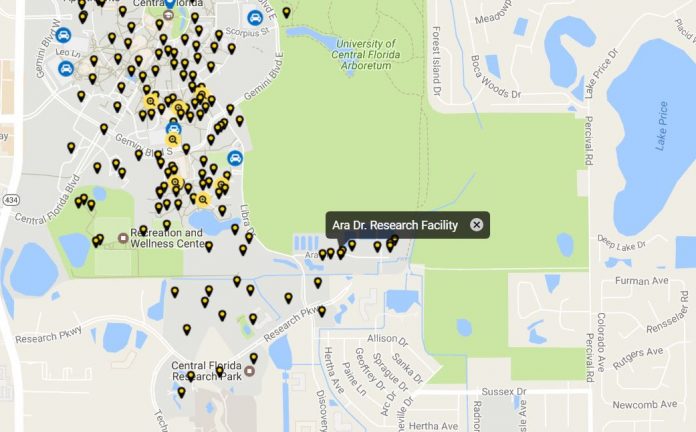The Southeast corner of the University of Central Florida main campus may see an enormous array of solar panels built to cut utility bills by twenty percent annually.
The UCF solar array would be the biggest in the state of Florida not backed by a utility and would be greater than any solar plant UCF’s energy provider, Duke Energy, owns.
The project cost has been estimated at $15 million – saving $2 million a year from Duke Energy’s annual billing to the university – and with operation and maintenance costs included, the facility could be paid off in fifteen years. UCF’s current energy bill exceeds $10 million.
“What’s driving this proposed project is UCF’s goal to be carbon neutral by 2050 and have 15 percent renewable energy production on campus by 2020,” UCF News & Information Communications Coordinator Rachel Williams said.
“These goals are outlined in UCF’s Climate Action Plan.”
The plant may begin satisfying the needs of half of UCF’s peak energy demand with up to 12 megawatts of energy as soon as 2019. The UCF Board of Trustees will review the 40-50-acre project in June 2017 and vote on an approval and contract with Duke Energy.
The state of Florida has seen little progress in new solar energy generation due to the monopoly and constricting renewable energy policies utility companies have in place. The Sunshine State may see an opportunity with UCF’s project – which must be allowed by Duke Energy since it will be constructed on UCF’s property.
“This is going to be a brave, new world,” Director of the Southern Alliance for Clean Energy Stephen Smith said to the Orlando Sentinel.
“Utilities are going to have to deal with the fact that they are not the only ones that can generate electricity.”
Options of how to fund the project are still in discussion, Williams said.
The ideal location for the plant will be in the Southeast corner of campus, near Ara Drive – a small roadway that is currently the location of small research facilities and a water plant that serviced and opened with UCF in the 1960’s. The land site will still need to be assessed for project design.




